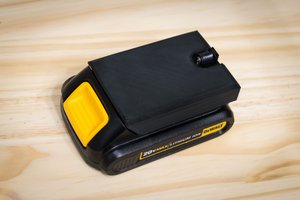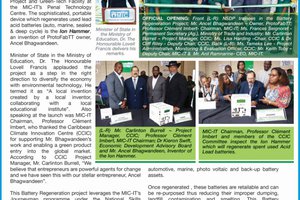The battery in my Lenovo laptop were slowly losing part of it's capacity. The remaining capacity was 69% (good score after 2,5 years) but I need the really long battery time while travelling.

The battery statistics according to Lenovo power utility:

So, I bought some Panasonic NCR18650B Cells (3400mah) for 6 euro a piece (can be bought cheaply here in China, just watch out for fakes) and decided to put them in. Theoretically Increasing the capacity from 69% of 5.6 Ah = 3.86Ah to 6.8Ah, a 76% increase in battery life!
After breaking the casing I saw a really nicely designed and built battery pack. Being curious about the IC's on the PCB I searched online and found two trustworthy IC's from Texas Instruments doing all the hard work:
- bq29330, a lithium battery protection IC
- bq8030, a lithium battery gauge, to keep track of the amount of charge left in the battery.
By chance I also found a site where they tried to refurbish a battery pack from a Lenovo battery pack and it did not work because of safety features on the PCB (link).
So checking the PCB again I found a curious small circuit which burns a non resettable fuse when problems are detected, trashing the battery. This is quite understandable, just another safety feature Lenovo build into the lithium battery I guess. Not knowing when the fuse would be blown, I had to proceed with caution. Thanks allaboutcircuits, for not letting me end up with a busted battery pack!
You cannot just solder wires to lithium-ion cells, they will just overheat and might even explode! Luckily at the moment I am living in Shanghai, so I went to a small electronics factory and spot welded some connections to the batteries (I did it myself) and connected them together in a 3x2 batteries in series way.

Back home, I first made sure both batteries had about the same voltage, the bad banana plug wires I used had enough resistance to keep the balancing current under 1A.

After waiting for a night the cells from the old and new pack had the same voltage. To keep the protection circuit from detecting the change in batteries I would need to keep the pcb powered with the old batteries until the new batteries were connected. Luckily Lenovo provided some testpads right next to the places where the batteries are connected to the PCB. So I soldered wires between the testpads and the tabs on the old batteries.

Then I slowly started to dismantle the old battery pack for the solder tabs connected to the pcb. It takes a bit of force, but you can get the tabs off in reasonably good shape.
And I attached them to the new batteries by soldering them together with a really thin layer of solder. The plastic seperators from the old pack were also reused.

Added some new double sided tape to the old plastic casing and put the batteries in:

I Soldered the tabs to the PCB again, taking good care not to short circuit anything. Then desoldered the wires running to the old battery pack and done!


At the moment the laptop is still charging (says there were only two minutes of charging left for about half an hournow). Hopefully Hackaday projects will let me post an update, don't know about that yet.
After a few charge/discharge cycles, the total charge according to the battery gauge is still stuck at 61.21 Wh. It should be about 3*3.7*3.4*2=75.5 Wh. If you disable all the low battery hibernate and sleep timers, the laptop will beep like mad when according to the battery gauge 0.25Wh is left in the battery. Then the laptop happily keeps running for about one hour.
Probably there is a software programmed capacity limit about 4Wh larger than the designed battery capacity (stuck at 57.72 Wh). ...
Read more » ClimbinElectronics
ClimbinElectronics
 Ihateword11111111111111
Ihateword11111111111111
 Lucas Rangit MAGASWERAN
Lucas Rangit MAGASWERAN
 Vitor de Miranda Henrique
Vitor de Miranda Henrique
 mosaicmerc
mosaicmerc